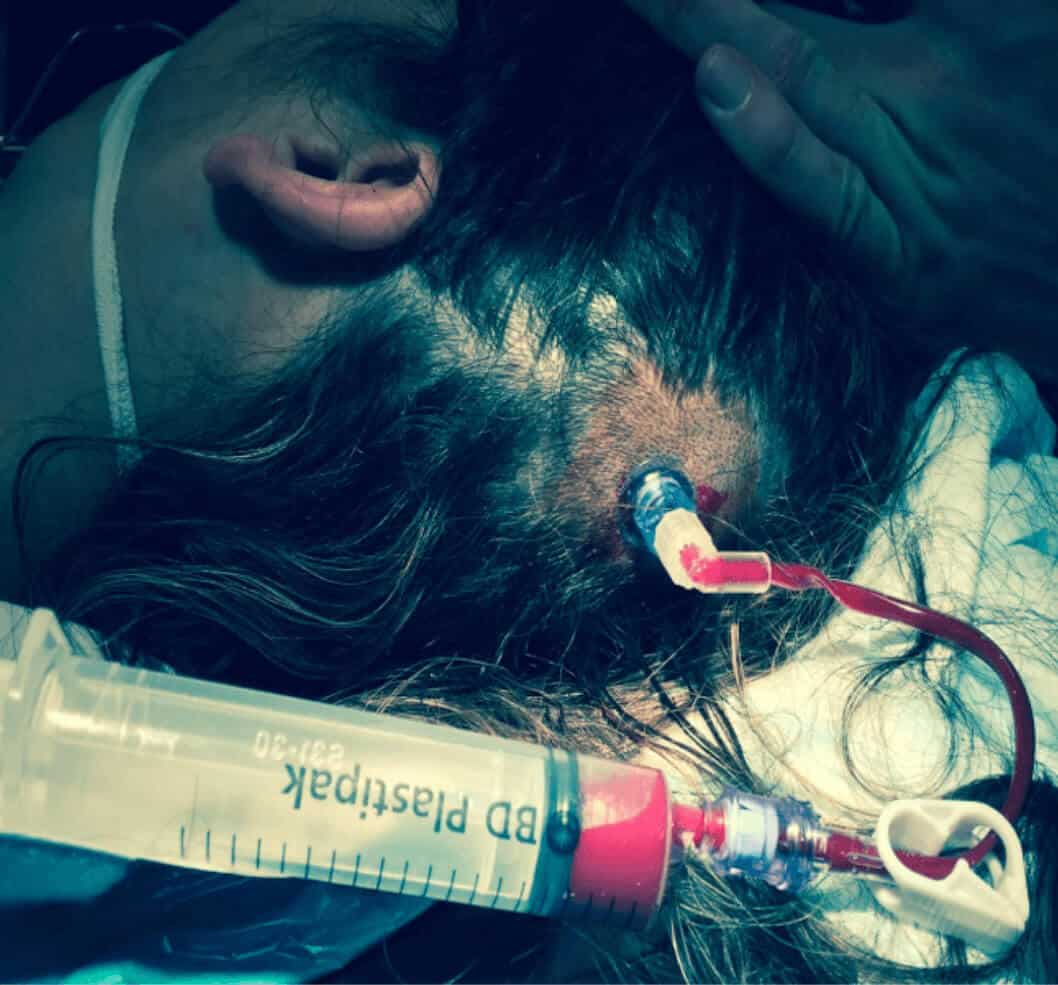This week, I would like to present a case study by Bulstrode et al (Injury, Int. J. Care Injured 48 (2017) 1098–1100) on the use of the EZ-IO drill for drainage of an extradural haemorrhage.

The case is of a 43 yo pedestrian hit by a car at low speed. The patient’s GCS on arrival to the Emergency Department was 14. A CT Brain shows a small frontal contusion and an occipital extradural.
One hour later, the patient’s GCS deteriorated to 8 and the left pupil was fixed and dilated.

A repeat scan demonstrated a large occipital-parietal extradural with midline shift.
The patient was intubated and prepared for transport to a larger facility.
 On arrival to the larger centre, the patient went to the operating room. Initially a 25mm 15 gauge intraosseous needle was used, after preparation of the occipital region, to aspirate 30ml of blood.
On arrival to the larger centre, the patient went to the operating room. Initially a 25mm 15 gauge intraosseous needle was used, after preparation of the occipital region, to aspirate 30ml of blood.
The patient then had a formal craniotomy and made an excellent recovery.
The procedure took about 8 minutes and did not delay the formal procedure, as the patient was being prepared at the same time.
This is the first time the I/O needle has been used for this purpose. It is perhaps a glimpse of the future for rural emergency department specialists, where patients deteriorate and transport is hours away.
The procedure can have its downside, with a risk of hitting blood vessels and causing further bleeding estimated at about 3%. However remember, that patient is deteriorating and needs drainage. Waiting will kill them.
The Neurosurgical Society of Australia recommends burr holes. In my view this is a safer approach.
The appropriate training is a must, but it is procedure that we can perform in the emergency department, that can make a significant difference.
Peter Kas




